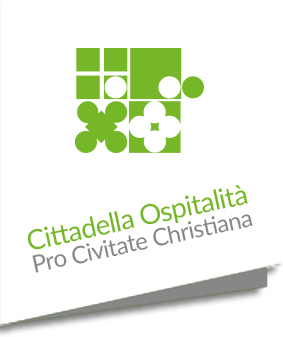Between 1569 and 1679 the great Basilica di S. Maria degli Angeli was built upon the will of Pope S. Pio V (1566-1572), who wanted to sustain the chapels of Porziuncola, of Transito, of Roseto and other places sacred by the memory of S. Francesco and welcome all the pilgrims who desired to visit them.
The original project by Galeazzo Alessi (1512-1572) was characterized by a rigorous structural simplicity, according to the Franciscan ideal of poverty.
The strong earthquakes that shake the region in 1832 caused serious damages to the Basilica; at the end of a lengthy and complex restoration directed by the architect Luigi Poletti, it was reopened to worship on the 8th of September 1840. The façade was radically reworked on a project by Cesare Bazzani, who intended to provide a kind of monumentality worthy of the importance of the Sanctuary. The inauguration took place on the 8th of June 1930, and an imposing statue of the Virgin, made of gilded bronze, was placed at its summit.
The “Porziuncola Convent” is sanctuary and mother house of the Friars Minor Order of Assisi. Not only it is the seat of the Provincial Curia, but also of the Historical Archive, of the Provincial Library, of the Theological Seminary and of the Provincial Infirmary. The Basilica di S. Maria degli Angeli in Porziuncola is a Papal Basilica, and its Pontifical Legate is His Eminence Cardinal Attilio Nicora.
Besides the precious service of Reconciliation, the Porziuncola also organizes many activities (welcoming, direction, parish activities, vocational and university activities).
from www.porziuncola.org
The Porziuncola
The small church of the Porziuncola was an important point of reference for the whole life of Francesco and his fraternity.
When S. Francesco arrived here in the early 1200s, this humble and solitary little church dedicated to the Lady of the Assumption was surrounded by a forest of oaks, in a state of almost total abandonment. Francesco actually fixed it with his own hands.
It was here that (on February 24th of 1208) the word of Jesus reached his heart: «Go… announce that the Kingdom of Heaven is near; do not get neither gold, nor silver, nor sack; you received without pay, give without pay». Francesco was struck by these words and, full of joy, said his greatest Yes to God: «This is what I want, this is what I want to do with all my heart!». He instantly abandoned his rich clothes for a cross-shaped tunic and began to announce the Gospel everywhere. He established his residence at the Porziuncola (received as a gift from the Benedictine monks of Mount Subasio).
Here, he welcomed his first companions and founded the Order of the Friars Minor. From here, Francesco sent the first friars on a journey to announce a message of Peace.
Here, on the night of Palm Sunday in 1211, the Saint welcomed Chiara and consecrated her to the Lord.
Here, the Saint held the first “Chapters” of his friars, which consisted in general meetings in which all of his Sons initially took part.
Here, during a night of July 1216, he obtained an extraordinary promise from Christ and the Virgin, who appeared to him: those who, through the centuries, had gone to pray in the Porziuncola, would have obtained the complete remission of their faults – the Perdono di Assisi (Forgiveness of Assisi).
Here, Francesco ended his life, accepting his death by singing: it was the 3rd of October 1226.
Along with the Cappella del Transito (Chapel of the Transit), particularly worth mentioning is the Roseto (Rose Garden), the Cappella delle Rose (Chapel of the Roses) and the nuovo Museo della Porziuncola (New Porziuncola Museum).
from www.assisiofm.it
